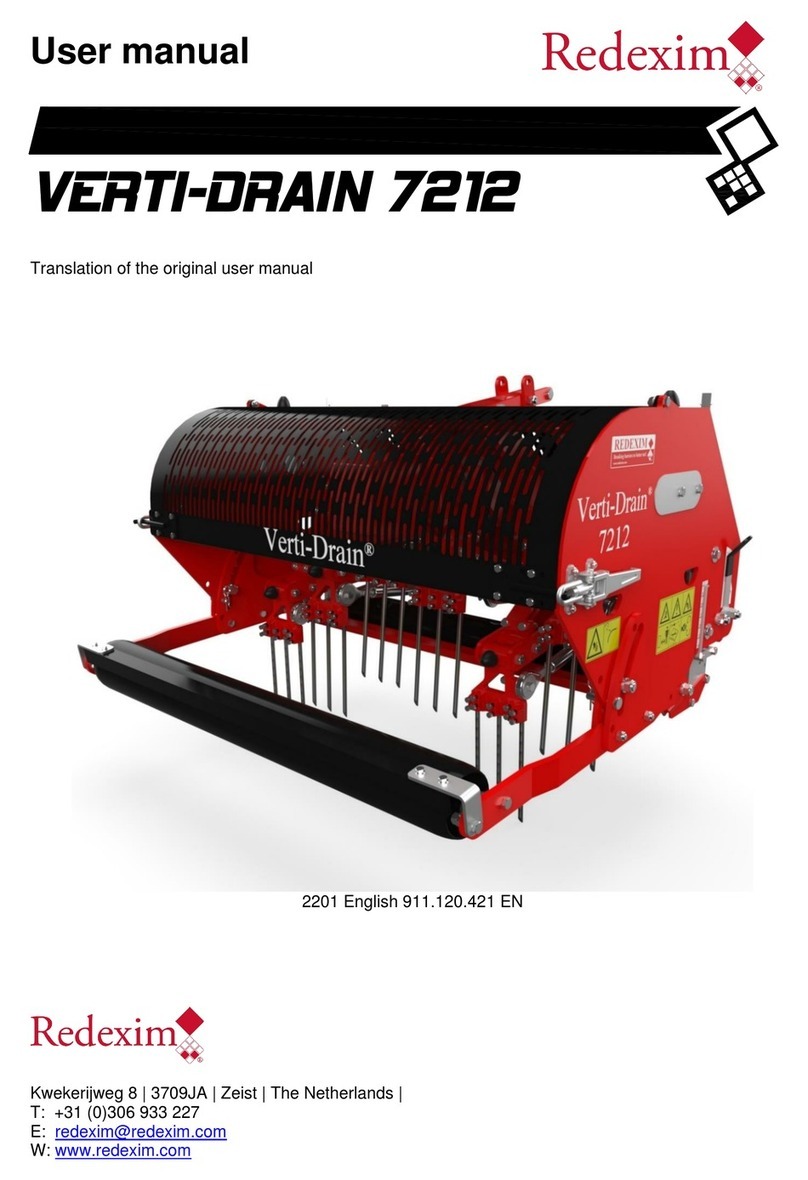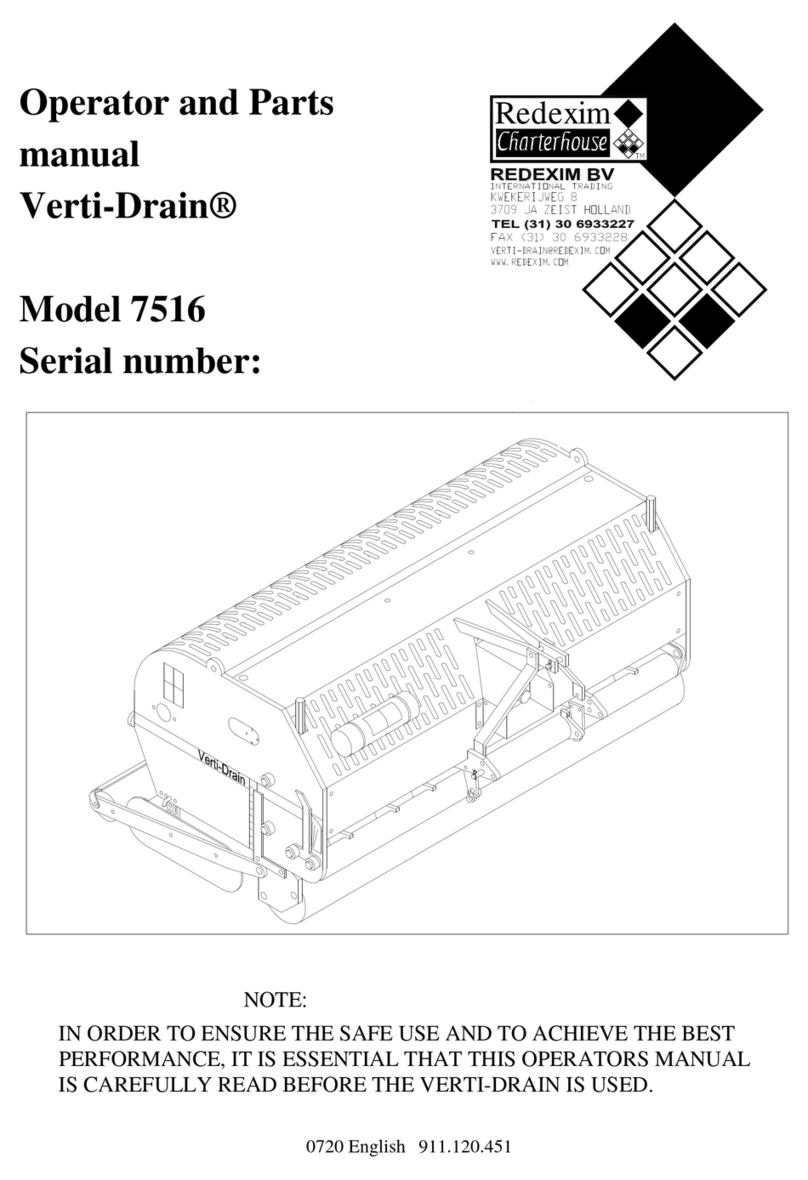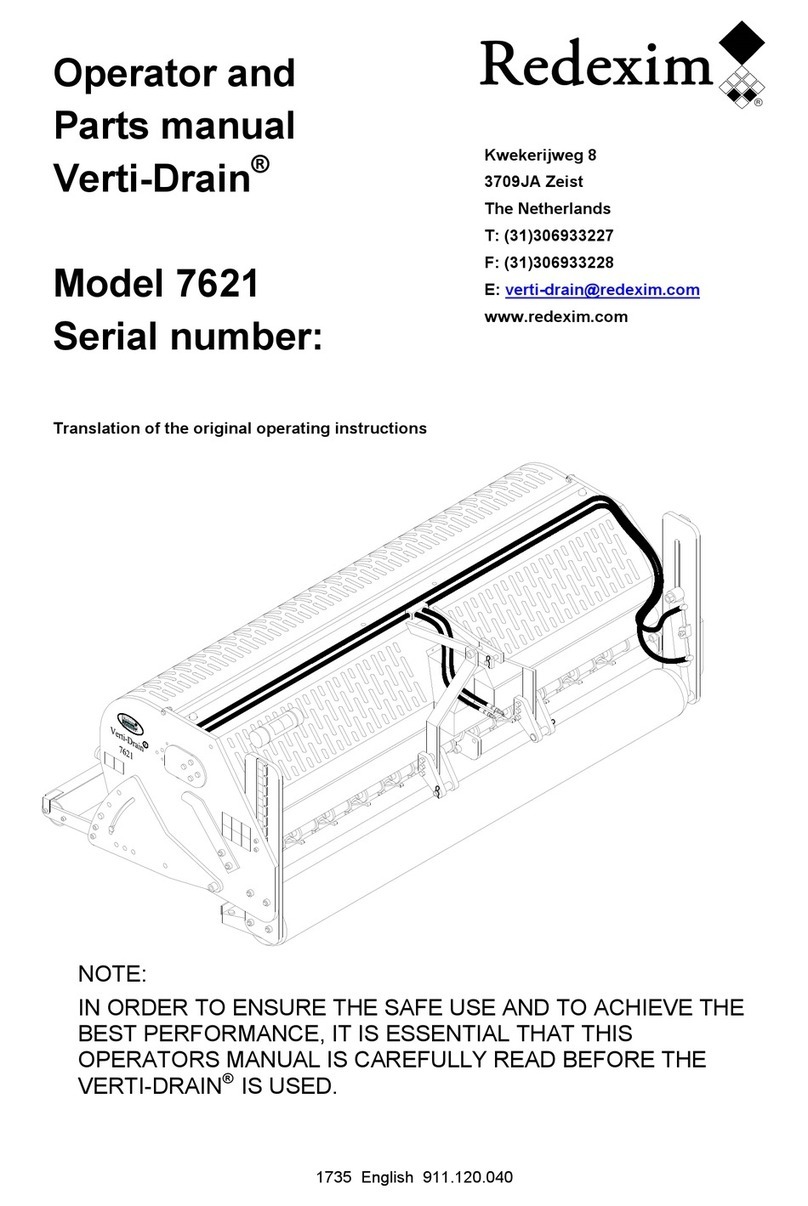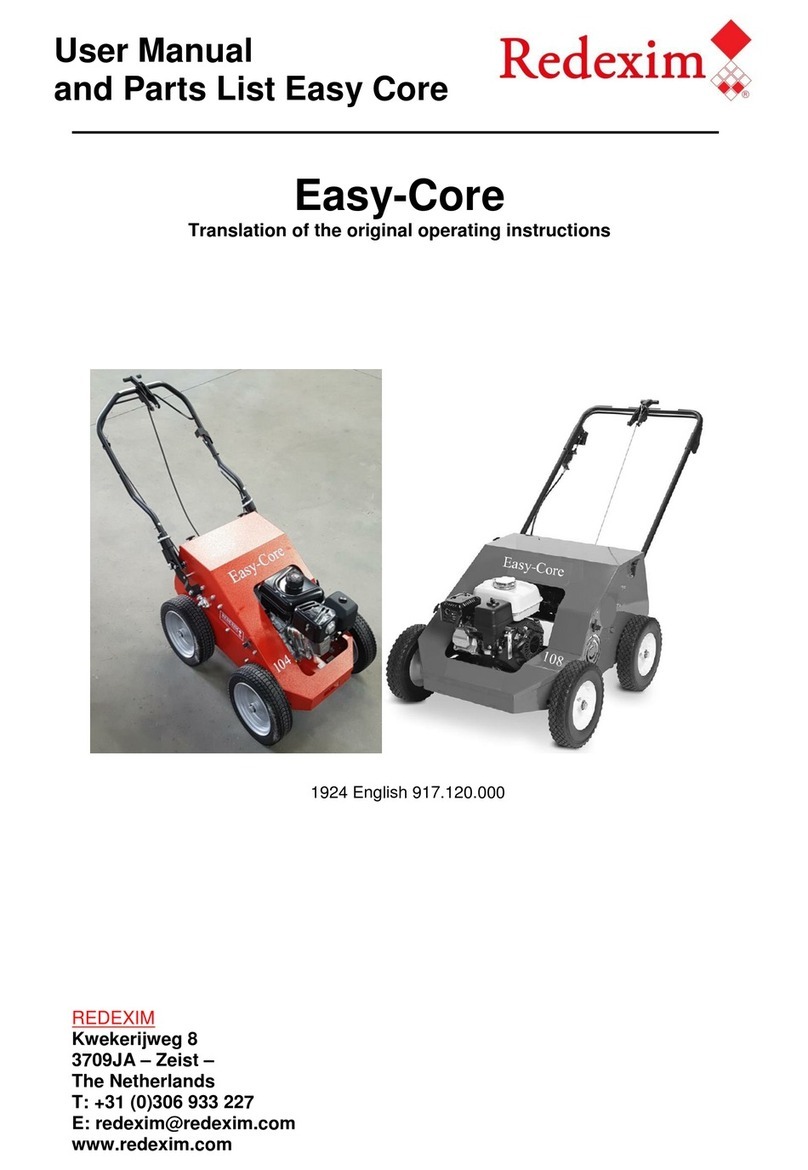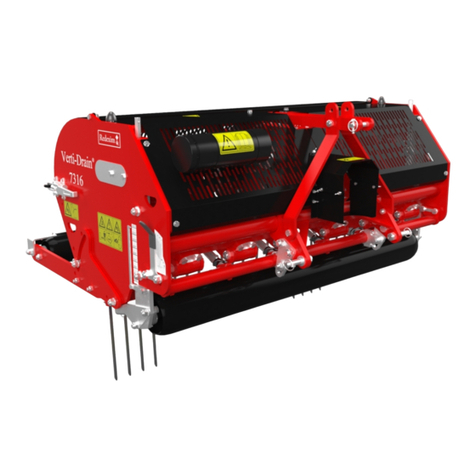
9
4.2 USE OF PTO
For the correct use of the PTO, the following items need to be checked:
1. During work the angle of the joints may never exceed 30 degrees
2. The joints have to be in line all the time
3. The tube overlap should always be minimal 150 (6") mm
4. Never use the machine with a damaged PTO protection cover.
5. For greasing see par. 13.0 Maintenance.
4.3 SLIPCLUTCH INFORMATION AND MAINTENANCE
The slipclutch will protect your machine against breakages when correctly used and maintained. The following
items are important.
1. The spring length is standard set at 33.0 mm , 1.300".
2. When the slipclutch slips, the bolt/nuts may be tightened a quarter of a turn at a time, till the
minimum length of 31.5mm, 1.250" on the spring is reached. Any further compression will
overload the machine
@ If too tight the machine may break down in the end or unsafe situations may occur.
3. The slipclutch should be maintained every month. Work as follows;
- Remove the top PTO protection cover of the machine
- Loosen up all bolts/ nuts two turns.
- Run the machine in the field at very low rpm's
- If the clutch slips, stop after 10 seconds.
- If it doesn't slip, loosen bolts more or go to (annual) maintenance.
- When the slipclutch has slipped, tighten the bolts/nuts up to the point the slipclutch works fine.
* Do not tighten it to the previous setting right away.
4. Annual maintenance:
- remove PTO from machine.
- inspect PTO shaft parts. Damaged parts should be replaced.
- disassemble the slip clutch by removing all bolts/nuts that hold the springs
- the slipclutch should fall apart in pieces.
- lay down the pieces and inspect parts. If parts are damaged or worn, replace them.
- clean all mating surfaces.
- assemble all parts and tighten bolts/nuts till the springs are all set at 33.0 mm , 1.300".
- Grease both tubes and assemble both PTO parts to each other.
- Assemble the PTO and mount it to the machine.
- Re-adjust the springs of the slipclutch when necessary as previously described.
@ The slipclutch protects the machine only against peak loads, when correctly adjusted. A continuous
overload will damage the machine in the long run and is not protected by the slip clutch. Do not
overload your machine.






